What were the worst pandemics in history, is a question that is often asked by health personnel and commoners alike, quite often to understand and judge how far as a society the human race has evolved. As the Coronavirus kills people and destroys the economy the world over (when this article is being written in – August 2020), many people think that this is the worst pandemic in history, ever.
However, as far as data till now are concerned, that may not be necessarily so.
In this discussion here we would not just discuss the worst pandemics in history but also the worst epidemics in history. So, it is very important to know the difference between the two. An Epidemic is a disease that occurs over a large area and affects a high percentage of a population. When this epidemic spreads across multiple countries or continents, then it is known as Pandemic.
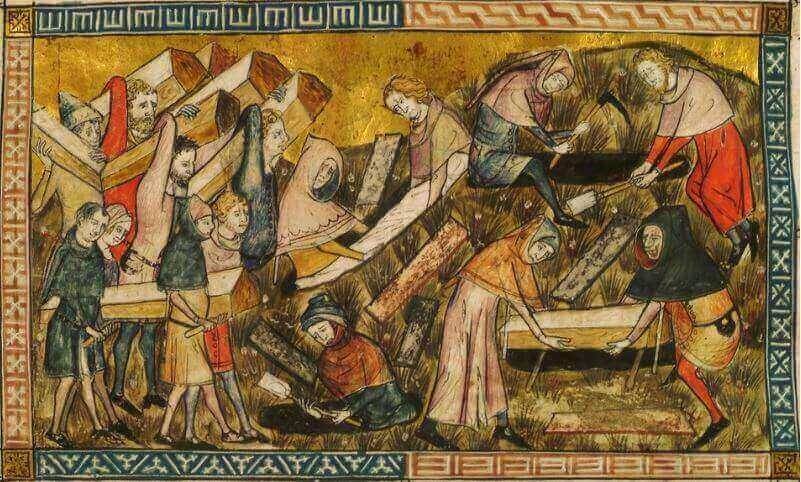
As the full effects of the Coronavirus Pandemic are still unfolding in front of our eyes the discussion regarding the current Coronavirus Pandemic or COVID 19 has been deliberately excluded. Below we have tried to explain the worst pandemics in history (& worst epidemics in history) by numbers, the period in which they occurred, and cause of their occurrence.
The Corona Virus Pandemic which started in 2019 from China, brought back the focus on a place that otherwise may have again got lost in the pages of history - the small abandoned settlement, which is known as Hamin Mangha and is believed to be the site of the first known epidemic, which occurred almost 5000 years back.
The area of Hamin Mangha is situated in modern Northeast China. Archaeological excavations undertaken here, between the years 2011 & 2015 led to the discovery of a strange Neolithic site. The prehistoric village discovered was very small and consisted of only 29 homes. What made this ancient area more peculiar was the presence of 100 burnt skeletons (of all age groups) inside a 200 square feet hut.
The condition of the skeletons showed that the bodies were burnt after heaping the deceased’s bodies one above another in the middle of the floor of the previously mentioned hut & later setting fire to the hut to destroy & dispose of the bodies quickly. It would be important to mention that the normal practice at the time, was to bury the bodies, but the urgency of the situation made the inhabitants of the village change their classical habit.

It appears that Hamin Mangha was struck by a deadly infectious disease, that spread quickly and killed the relatively primitive people present in the area. The inhabitants tried to dispose of the body quickly and left the area, permanently, leaving behind the eerie specter of a ghost village that was slowly buried in the sands of time & was lost in the pages of history.
The exact cause of death remains still in speculation, but one thing we know for sure - the forsaken & uninhabited settlement of Hamin Mangha, fell to some kind of virulent infection.
The next event which rightfully belongs in the category of worst epidemics in history is the Plague of Athens which occurred during the Peloponnesian War, that occurred between ancient Greek states of Athens and Sparta (each with their respective allies by their side) from 431 BC to 404 BC (when Athens finally surrendered to Sparta). The disease (Plague of Athens) started in the city-state of Athens in 430 BC.
It is believed that the plague, entered the overcrowded city-state (under siege by Spartan army) through its port – Piraeus. The overpopulated conditions compromised the hygiene standards and became a fertile ground for the spread of disease. Finally, the illness was responsible for the death of 75,000 to 100,000 people in Athens.
A great part of the knowledge about the Plague of Athens comes from the work of the Greek historian – Thucydides, who recorded it in great detail. The social norms, rules & regulations were not adhered to by the people, who saw hopelessness all around and an impending doom looming over their lives.
The religious institutions & faith itself were challenged, as Athenian society suffered a breakdown from a disease inside their city walls, as their enemies surrounded them.
The Plague of Athens caused severe damage to Athens and weakened it significantly when it was already fighting a war against a strong opponent. Even Pericles, the famous statesman & general of Athens, succumbed to the Plague of Athens in 429 BC along with several of his family members. The disease would finally die out in 426 BC.

For a disease that caused so much damage, the exact cause remains debatable. The findings mentioned by Thucydides, give insights to the symptoms suffered by the patients and treatment attempted, but pinpointing a particular disease has not been still possible. Different diseases have been implicated for the Plague of Athens, of which some are –Measles, Bubonic plague, typhus, smallpox, typhoid, Ebola, and many other infectious diseases.
In 412 BC Northern Greece & the Roman Republic were struck by an epidemic, the cause for which remains unknown. However, the description that has been given by Hippocrates (in Greece) and Roman historian Livy (regarding the incidence in the Roman areas) make many modern doctors believe that the disease described was probably one of the earliest descriptions of Influenza in history.
The epidemic in both Greece & Roman areas continued for approximately a year. The epidemic of 312 BC caused a food shortage in the Roman Republic and it was only because of the food relief obtained from areas like – Etruria and Sicily, that famine was prevented. Unfortunately, the details of the epidemic, which includes the death toll, remains unknown.
The Antonine Plague would also figure as one of the worst pandemics in history, which affected the Roman empire when it was still at its height of power. Much of what we know about the Antonine Plague, comes from the description of the physician – Galen, who described it. This is the reason; the disease is also known as the Plague of Galen.
The Antonine Plague is named after the family name – Antoninus, of Roman emperor of the time – Marcus Aurelius Antoninus. Incidentally, the co -reagent to rule with him – Lucius Verus, who died in 169 AD, is believed to have died of the Antonine Plague & Marcus Aurelius would also suffer the same fate another 11 years later.
The Antonine Plague is believed to have spread to the Roman empire by Roman troops returning after completion of their campaign. The pandemic affected the people living in the empire severely and devastated the military might of the Roman empire. In total, some 5 million people are believed to have perished due to the Antonine Plague. Based on the symptoms described, experts believe that it was Smallpox that was responsible for the Antonine Plague.
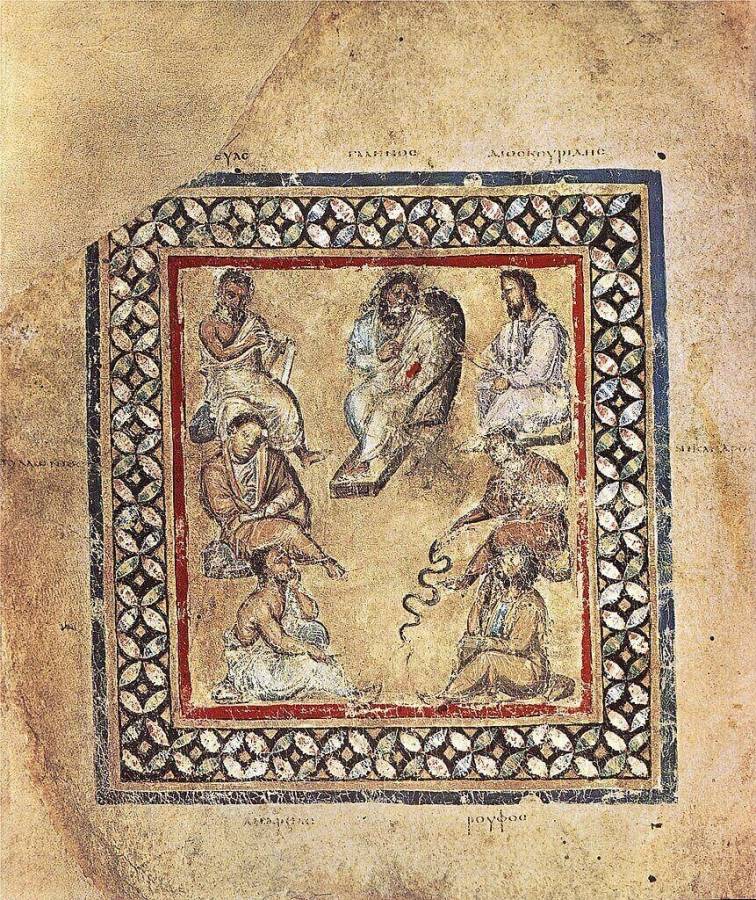
The lives of people living in the Roman empire was greatly affected during the Antonine plague. The wrath of gods was suspected behind the reason of Plague and the Christians were persecuted. However, the charitable nature of devout Christians, who helped the people in need, when many others abandoned them also won them a lot of sympathy and followers.
The promise of heaven after death for those who practiced their religion honestly, also made many convert to the new religion of Christianity.
The Antonine Plague also made the Roman military weak and prone to attack from its enemies. Death of skilled workers caused a shortage of efficient people to carry out important functions and weakened the infrastructure, finally leading to the eventual decline of the Roman empire.
After describing the Antonine Plague, it is but natural that next in consideration, based on chronology, when it comes to the worst pandemics in history would be – the Plague of Cyprian, which affected the Roman empire, which at the time was now on a path of decline. The Pandemic would last from 250 AD to 271 AD.
Plague of Cyprian is named on an early Christian writer, who at the time was also Bishop of Carthage and went by the name of St Cyprian. He saw the sickness causing devastation all around him and went on to record his findings. He described the plague, and the destruction caused by it as if it appeared that the world was going to end.
The plague reached Rome from the outskirts of the empire by continuous invasions by outsiders and fighting that followed, which also contributed to the rapid spread of the Plague of Cyprian. Natural calamities like famine, flood, and drought also increased the sickness and death that occurred during this period. Political instability only made the situation worse.
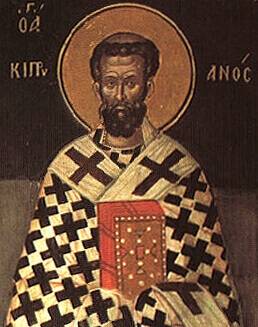
At its peak, The Plague of Cyprian was responsible for almost the death of 5000 people per day in Rome alone. Believed to be the punishment of God, by the people of the time, the disease was highly contagious and spread by both direct contact and indirect contact. The specific agent responsible for the disease, remains still a debatable subject, with viral hemorrhagic fever like Ebola and Smallpox being the most common suspects.
The Plague of Justinian is named after the Emperor Justinian I or Justinian the Great, who was the Eastern Roman Emperor and ruled from 527 to 565 AD. Although he is more famous for creating monuments like Hagia Sophia in Constantinople (modern-day Istanbul), the bubonic plague pandemic, which later became notorious as Plague of Justinian, remains one of the dark chapters of his reign.
The Plague of Justinian, which is sometimes also known as the beginning of the first plague pandemic, was a transmissible disease caused by the bacterium Yersinia Pestis. The Plague at its peak would affect vast areas of Europe and Asia, with the capital – Constantinople, especially being badly affected, with a fifth of the capital’s population dying in the pandemic. The emperor himself was affected by the disease but managed to recover, but many of his subjects were not so lucky.
It is believed that the Plague of Justinian affected half of the population of Europe and in total claimed the life of about 25 million to 50 million people. The Plague of Justinian would also mark the beginning of the decline of the great empire, founded by Justinian I. The plague continued to recur periodically afterward. However, the Plague of Justinian would remain the best-known occurrence of the first plague pandemic.
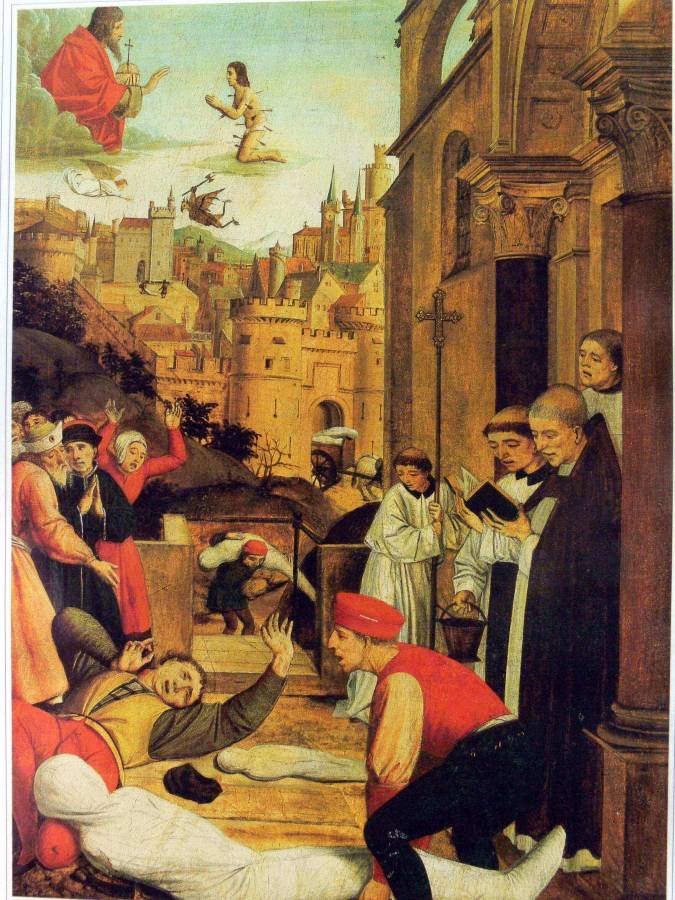
As the name suggests this epidemic occurred in Japan at a time when its contact with the Asian mainland was increasing. The Japanese Smallpox epidemic started from Kyushu- one of the main islands of Japan, where the disease was brought by a Japanese fisherman, who had earlier been to Korea. Within a very small time, a great part of the island population was affected & sickened by the disease.
Agriculture was badly affected and soon a famine occurred.
From the island, the Japanese Smallpox Epidemic spread to other parts of the country by a group of Japanese government officials who were passing through the island and later fell sick. As they returned to the capital, they spread the disease to a lot many other people. The disease which was caused by smallpox is believed to have caused the death of almost 1/3rd of the Japanese population (approximately 2 million).
Not just it caused a large number of deaths, but the economy was also devastated. This can be understood by the fact that by 737 AD, tax exemption by the government was given for people of the entire country.
The Black Death is perhaps the worst pandemic in history, that had far-reaching consequences in a great part of the world. The Black Death marked the beginning of the second plague pandemic. The disease was caused by bacterium Yersinia pestis, which we all know now as the causative agent of Bubonic Plague, but can also cause Septicemic or Pneumonic plague.
The disease started in Asia but finally reached Europe by trading ships, infested with rats containing infected fleas. Once the disease reached land areas, human fleas and infected aerosols also played a great role in the fast spread of the disease. In Europe, the disease initially affected Sicily and other parts of the Italian Peninsula, from where it would spread to other parts of the Continent.
The symptoms affecting the people were described clearly in detail, which would later help in understanding the disease better. However, at that time people had no understanding of what was happening to them & hence no knowledge as to how to prevent the disease. Physicians of the time used crude and unscientific methods for treatment, which further increased the casualties caused due to The Black death.
The sick people were avoided by others, which sometimes also included physicians or clergy of the time. Animals were also affected. Some believed that it was the anger of the gods, which caused the black death. This again led to the persecution of religious minorities and the so-called heretics.
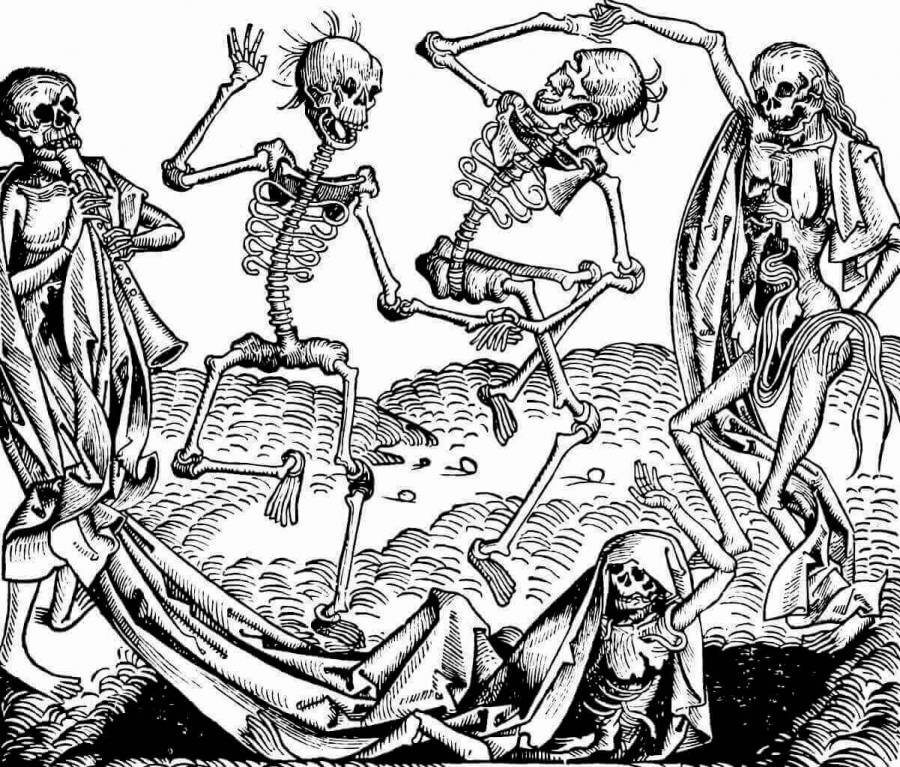
Although the Black Death was no doubt the worst pandemic in history, but like a dark cloud it had its silver lining. The practice of isolating the sick people to stop the spread of the disease also evolved because of this unfortunate tragedy, which later would give rise to Quarantine procedure. Although the estimates vary, it is believed that some 75 to 200 million people died in Eurasia, with almost 60% of people in Europe succumbing to the disease.
The Influenza Pandemic of 1510 also merits consideration among the worst pandemics in history, as this is the history’s first pathologically described pandemic. Before this local epidemic of infectious diseases with predominantly respiratory symptoms had occurred, but 1510 Influenza Pandemic would be the first of its kind to have worldwide involvement & it was also the first to have a pathological description.
The 1510 Influenza Pandemic originated in Asia, and rapidly spread to the other continents, in the summer of 1510. Besides Asia, Europe and Africa were also affected. The disease was found to be highly infectious at the time and caused severe disruption of the society and government present in the involved areas. However, the silver lining was that the death rate was relatively low (around 1%) & the pandemic ended quickly.
Smallpox was not present in Mexico or anywhere in the American continent before Europeans came and took over the place in the Colonial era. In modern-day Mexico, Smallpox was brought by Spanish, who arrived there as a plan of their colonial expansion. It is Hernan Cortes who is credited with bringing the downfall of the Aztec empire, which ruled over the land at the time, but Mexico’s Smallpox Epidemic also helped him greatly.
The army of Hernan Cortes was very small to defeat the Aztecs and take over their capital city. However, the Aztecs and other native people of America fell prey to Smallpox, which was new to their land. They had no previous exposure to the disease, and hence possessed no immunity to it.
The native population died in great numbers and were incapacitated by the disease. The farming also suffered which caused a severe famine. It is believed that somewhere between 5 to 8 million people (around 40% of the population) died in the Mexico Smallpox Epidemic & finally the control of the land passed into Spanish hands.
Millions of people died in the 16th century in what now is modern-day Mexico, because of a mysterious illness characterized by bleeding (from ear and noses), jaundice and high fever, which was called as Cocoliztli by the native Aztecs, which meant pestilence in the Nahuatl language.
The disease had such a devastating effect on the population that the Cocoliztli epidemic became known as one of the worst epidemics in the history of Mexico. The physicians of the time had no idea how to tackle the disease.
Although opinions behind the exact cause of death of people remain divided, modern studies have shown that infection by Salmonella, may have played an important role. Although the historical symptoms of Cocoliztli described don’t point to Salmonella like infection, but more likely towards viral hemorrhagic fever - which may have worked alone or with other factors like drought affecting the region, to cause the morbidity and mortality observed in the Cocoliztli epidemic.
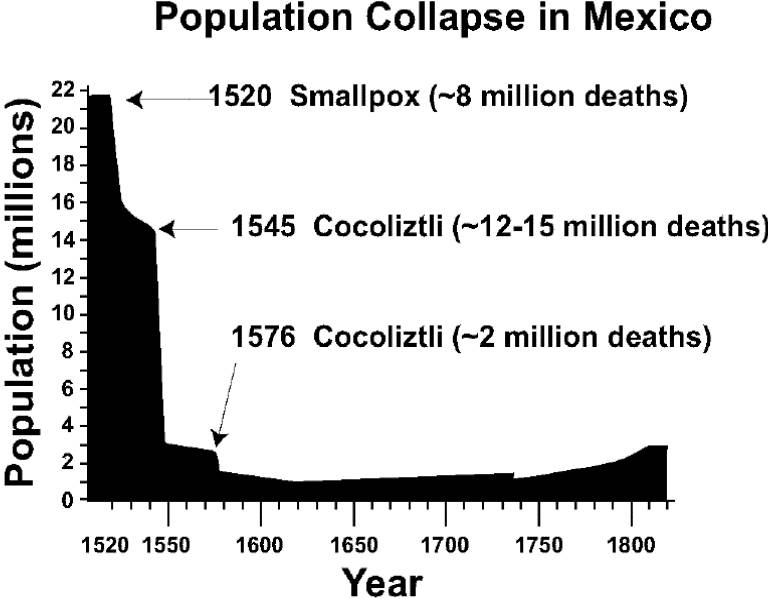
Between 12 to 15 million people died in Mexico and Central America, due to the Cocoliztli epidemic that occurred between 1545 to 1548. However, this Cocoliztli epidemic would again occur many times in the region in the future among which the Cocoliztli epidemic of 1576 would be important, where another 2 to 2.5 million people would die. These worst epidemics in history would contribute to a radical fall of the population in the area.
Spain in the 17th century suffered from multiple epidemics of Bubonic Plague, which were responsible for a large number of deaths. The first one of these was the – The Plague of 1596 to 1602, which started because of disease-carrying ships arriving from Northern Europe to Santander in Spain, which would later spread to other parts of Spain. It is believed that approximately 600,000 to 700,000 people died in this epidemic.
The next severe incidence of Spain Plague Epidemics would occur in Seville between 1647 AD to 1652 AD and would go by the name of – the Great Plague of Seville, which would be one of the worst epidemics in the history of Spain. It is believed that this plague started because of infected ships arriving from Algeria, and the Mediterranean coast of Spain was affected initially before spreading to other areas.
It is believed that 500,000 people died because of this pandemic.
The Plague of 1676 AD to 1685 AD, would be the last outbreak of plague to affect Spain in the 17th century. This would be another major epidemic attack of Bubonic Plague that would affect Spain almost 25 years later after the Great Plague of Seville and would last for almost 9 years, with the disease coming in waves. The people had become greatly susceptible due to the famine-like conditions present at the time due to the poor harvest of 1682 to 1683 and easily fell prey to the disease.
It is believed that 250,000 people died in this epidemic.
As the name implies, the Italian Plague of 1629 AD to 1631 AD (sometimes also known as the Great Plague of Milan) mainly involved northern and central parts of Italy from 1629 to 1631. The series of bubonic plague outbreaks that occurred during the period were responsible for the death of approximately 280,000 people making it one of the worst epidemics in history.
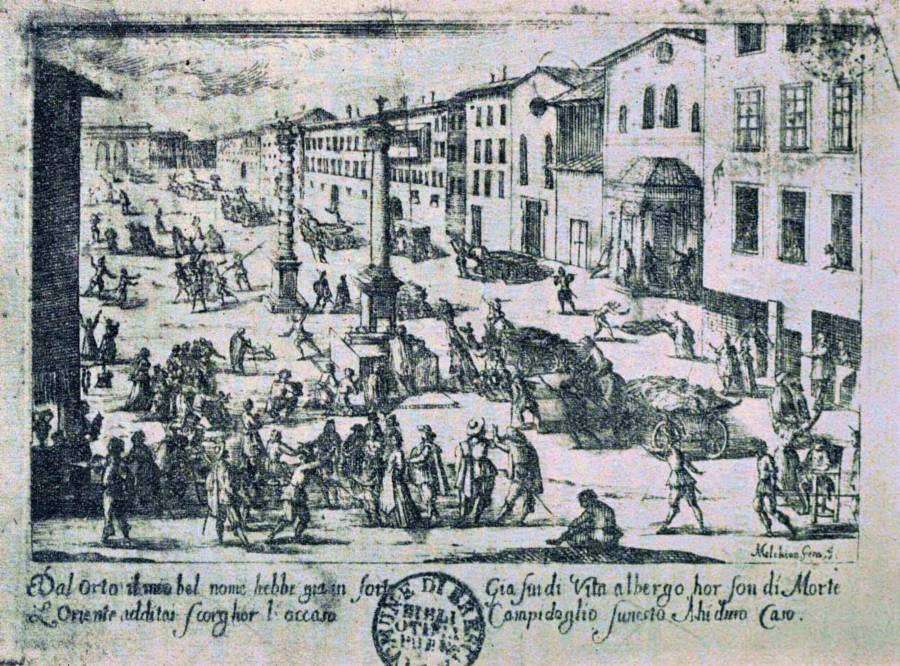
The Thirty Years War that was being fought in central Europe, during the period played an important role in the spread of disease. It was the movement of French and German troops, which brought the plague to Mantua, Italy in 1629. Again it was the retreat of the Venetian troops into central and northern Italy, which further facilitated the spread of the disease. Major cities like Florence, Milan, Verona, and Venice were badly affected by the Italian Plague.
In Venice, the patients suffering from the disease were even banished to nearby islands, to prevent the further spread of the disease. However, in the end, besides the massive number of deaths, Italy’s economy also greatly suffered & declined compared to the economy of other western European countries.
The Great Plague of London would certainly qualify as one of the worst epidemics in the history of Great Britain. The epidemic of Bubonic plague that devastated London, from 1665 AD to 1666 AD is believed to have caused more than 100,000 deaths. The causative agent was the bacterium Yersinia pestis, that passed to humans after being bitten by rodent (rat) flea.
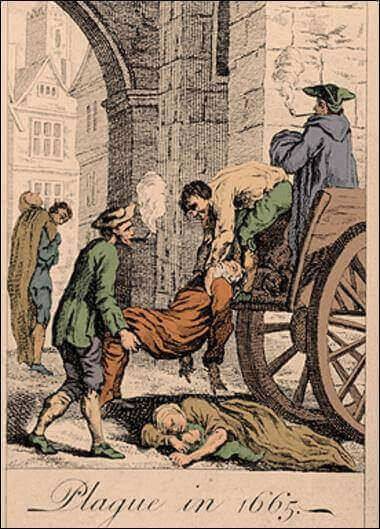
Although remembered in history as the last major epidemic of Bubonic plague to occur in England, the plague at the time had severe repercussions. It is estimated that around 15% to 25% of the population of London had died and a great many people had left the city. This also included King Charles II & his close aides. Although the disease did spread to different areas, by 1667 the epidemic had disappeared from England.
Most scholars agree that the Great Plague of London ended spontaneously.
The Great Plague of Vienna which occurred in Vienna, Austria in 1679 was a part of a larger outbreak that occurred in many neighboring countries during the period. The description available about the disease indicates that the disease was Bubonic Plague, which is caused by Yersinia Pestis, which is carried by fleas present on rats or other rodents living in unhygienic conditions.
The city of Vienna was highly populated with people living in close quarters. The city at the time had very unhygienic living conditions, which included a lack of public sewers or drainage system. Even household garbage was thrown in the streets. The city also was part of a major trade route. All these factors played an important role in the easy spread of the plague.

The city was affected very badly in the Great Plague of Vienna. The physicians of the time tried bloodletting, emetics, and multiple other dubious treatments, which had very little effect on the course of the disease. Around 76,000 people died because of the Great Plague of Vienna. Other cities of Europe were also similarly affected around the same period and also suffered a varying number of casualties.
The Great Northern War which was fought between 1700 AD to 1721 AD with Russian led coalition forces against Swedish Empire in Europe, was the most important factor, behind the plague named on it & which saw its peak between 1708 AD to 1712 AD. Scholars believe that this epidemic was part of a greater pandemic that was present during the time in an area extending from Central Asia to the Mediterranean.
The disease would soon spread via the travel, military & trade routes to areas around the Baltic sea.
The Epidemic Outbreak during the Great Northern War was Bubonic plague which predominantly affected countries like – Lithuania, Denmark & Sweden and resulted in the death of 150,000 to 164,000 people. Although it is a bit difficult to differentiate between the total number of deaths due to actual plague infection & death due to starvation/other diseases exacerbated by the ongoing war.
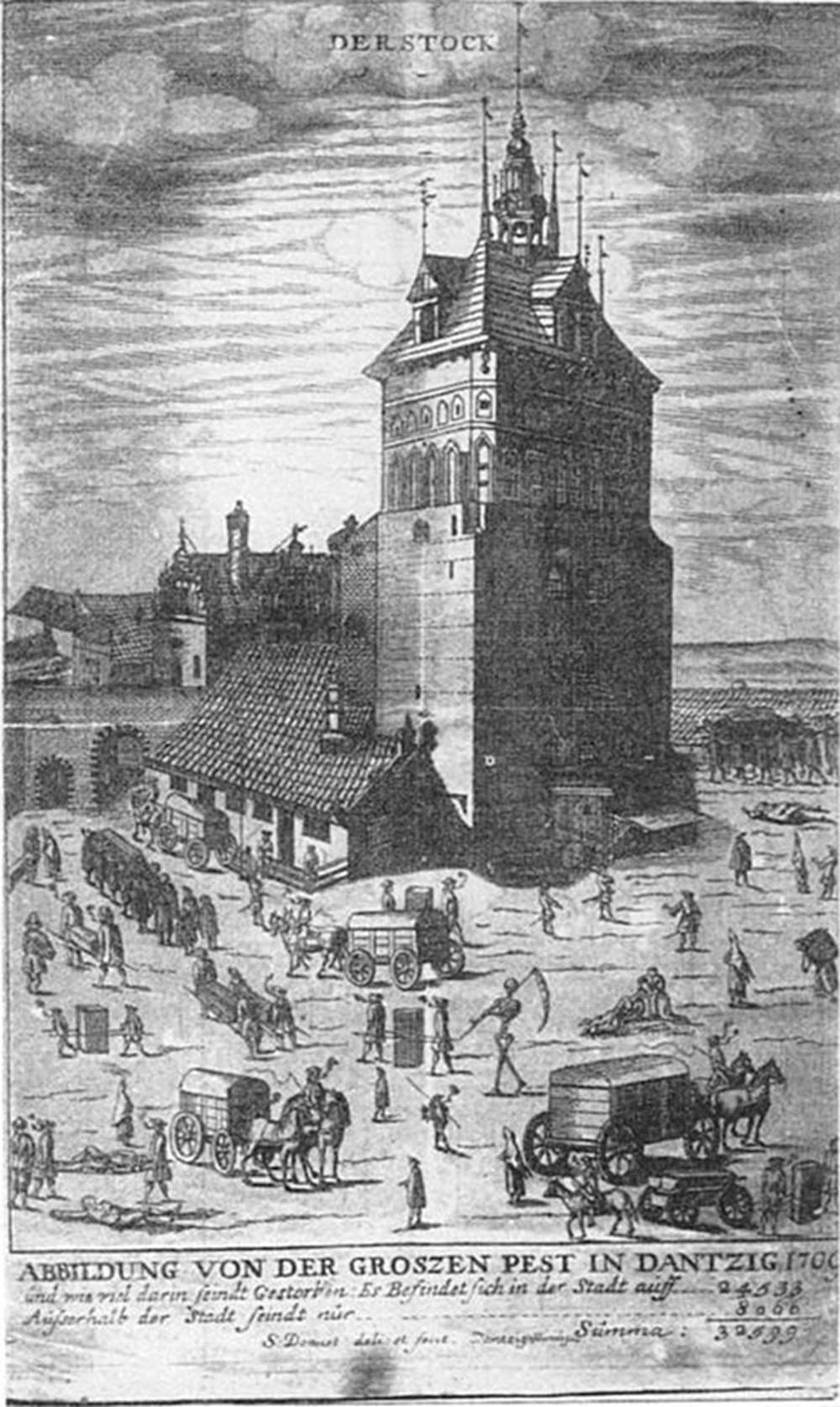
Refugees and soldiers served as the carrier of the disease. Some cities were worse affected than others and had a higher death rate. The physicians of the time had no idea of how to treat the disease, but Quarantine Procedures were enforced to decrease the spread of the disease.
The Great Plague of Marseille was an Epidemic of Bubonic Plague that affected the city of Marseille (and surrounding provinces), France between 1720 AD to 1722 AD. Although this was one of the worst epidemics in the history of France, it was also of considerable significance as the Great Plague of Marseille would be the last major attack of Bubonic Plague in western Europe.
The Plague started when an infected ship carrying a cargo of goods from the eastern Mediterranean docked in Marseille, France. Although the ship was quarantined, the Plague still got managed to get into the city. It is believed that almost 100,000 people died in the Great Plague of Marseille, of which almost half were from the city itself.
Sometimes also known as the Plague of 1771, the Russian Plague also occurred in the backdrop of war, the Russian – Turkish war which was going on the time between the Russian empire and the Ottoman empire. The occurrence of Plague in the Caucasus and Balkans, where the majority of the war was taking place, was quite common. It was in January 1770 that some Russian troops present in Moldova first developed signs and symptoms of Plague.
Soon this Bubonic Plague epidemic would spread to Ukraine & Central Russia and finally reached Moscow.
Although quarantine checkpoints (& other measures) had been set up years earlier by Peter the Great, these checkpoints failed miserably in wartime, in a Bubonic Plague attack which would later prove to be one of the worst epidemics in history affecting the area. A deliberate attempt to underplay the epidemic situation accompanied by the inability to identify the cause in other places would give rise to a Plague epidemic that became very difficult to control later on.
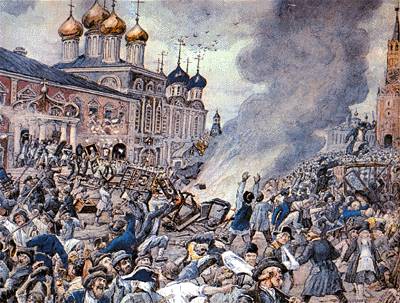
Besides the ongoing epidemic, Plague Riot also erupted in Moscow, impairing the law and order situation. The Plague would have a serious long-lasting effect on Moscow. Taxes and military conscription would decrease, which also affected the war effort. In total, approximately 100,000 people would die due to the Russian Plague epidemic.
The North American Smallpox Epidemic which occurred between 1775 AD to 1782 AD was important for multiple reasons. The epidemic occurred during the American War of Independence. The fact that people were often forced to stay in an overcrowded city under siege or the camps of military facilitated the spread of the disease, as hygiene was often compromised in these conditions. Even health sciences were not still advanced enough to prevent complications, which caused the spread of disease easily.
The North American Smallpox Epidemic as the name indicates was not just limited to colonies on Eastern seaboard or the area affected by war. The North American Smallpox Epidemic true to its name, spread throughout the North American continent. The disease also favored no humans, as both the Continental Army and the British were affected, though the Continental army was much more badly affected. For a time, it posed a major threat to the success of the Continental Army, which lost more troops to disease than to combat.
The Native American population (almost all the tribes of the continent) were much more adversely affected than the British, as they had much lesser previous exposure to it. More than 11000 Native Americans died only in the western area corresponding to current day Washington. By the year 1779, the disease had spread to Mexico and would cause severe devastation.

By the time the disease ended it also affected areas that were located far away like - northern areas of modern-day Alaska, thus affecting the whole continent. It is believed that of approximately 130,000 estimated deaths that occurred due to Smallpox, in-between the years 1775 to 1782, more than 113,000 were from Spanish America.
Philadelphia Yellow Fever epidemic which occurred in Philadelphia in 1793 was because of Yellow Fever, a disease caused by a virus, which spread by the bite of an infected female mosquito. The epidemic supposedly began in the summer of 1793 when refugees from the Caribbean (where yellow fever was already present, came to Philadelphia). They had unintentionally brought the disease to the city, where it spread rapidly.
The sickness overwhelmed the city’s infrastructure and the government moved out of the city, and almost 20,000 people fled to the surrounding countryside. It is estimated that 5000 people died in the epidemic. However, the onset of the winter eradicated the imported mosquitoes and luckily brought an end to the epidemic.
Also known as the first Asiatic Cholera Pandemic or Asiatic Cholera, this was certainly one of the worst pandemics in history. The pandemic was quite shocking for the devastation it caused in many countries of Asia. This Cholera pandemic also marked the beginning of the many still to come pandemics of Cholera that would sweep across Asia and Europe in the 19th & 20 centuries.
The Pandemic originally started in the town of Jessore in eastern India. Attacks of vomiting, diarrhea and other gastrointestinal symptoms, soon led to numerous deaths across the province of Bengal. Movement of people, especially pilgrims spread the disease all across the Indian sub-continent. The movement of British army personals as well as Navy ships & other merchant ships contributed to the spread of the Pandemic to many other countries like – Burma, Sri Lanka, Thailand, China, Japan, Philippines, Java & Sumatra.

In the western direction, the Middle East, Eastern Africa & Mediterranean coast was also involved. Many experts believe that it was the extremely cold temperature, that was present in the winter of 1823 – 1824 which resulted in a stoppage of further transmission of the disease, as the bacteria died due to extreme cold.
The disease soon disappeared from most places, except in some regions around the Bay of Bengal. The total death figures remain highly controversial, but it won’t be wrong to say that hundreds of thousands of people died. Many other Cholera pandemics would again soon follow, continuing to cause the deaths & devastation all around the world.
The Third Plague Pandemic which began in Yunnan, China in 1855 can certainly be described as one of the worst pandemics in history by numbers, as by the time it ended it had caused the death of more than 15 million people, majority of which were in India & China.
Here it should be cleared that this pandemic is called as Third Plague Pandemic, as the Plague of Justinian which occurred in the ancient Byzantine empire, marked the beginning of the First Plague Pandemic, which ended near the middle of 8th century. The Second Plague Pandemic began with the Black Death and continued until the 19th century.
This pandemic of Plague (which included both Bubonic and Pneumonic manifestations) started in a background of a rapid increase of population in the Yunnan province of China where people had come from distant places for work-related purposes. Increasing crowding and transportation of people to and from the area facilitated the spread of plague-infected fleas very fast to surrounding areas.
By 1894, the plague had spread to Canton and later to Hong Kong. By 1896 the Plague had affected Bombay in India and soon by international trade routes, ports on every continent would be affected by the 1900s.

On a positive note in it was in 1894 in Hongkong, that Yersinia pestis was discovered as the causative agent of Plague, by the physician Alexandre Yersin. The fact that brown rat was the primary host of plague and rat flea was the vector spreading the disease, was also discovered by Paul Louise Simond during this pandemic (in 1898) in Karachi. The Third plague pandemic waxed and waned throughout the world for the next few decades. According to the WHO, the pandemic was active until 1960.
The 1889 to 1890 Flu Pandemic, which is also known as Russian Flu or Asiatic Flu, was one of the worst pandemics in history that originated in Russia. The deadly influenza pandemic was responsible for the death of more than 1 million people and was possibly caused by influenza A virus subtype H3N8.
The 1889 to 1890 Flu Pandemic initially originated in the city of Bukhara (at present in Uzbekistan) in May 1889, when it was part of the Russian empire. Soon people were dying all around. Facilitated by the advancement of transport facilities (railways in this case), the Russian Flu spread fast. By November of that year, Saint Petersburg was badly involved as was Moscow. Soon trade routes would spread the pandemic to different parts of the world including Asia, Europe, Africa, Australia & America.
The 1918 Influenza Pandemic would be described by some as the worst pandemic in history and for good reasons. It was one of the deadliest pandemics in human history, with approximately 500 million people involved across the world, and an estimated 50 to 100 million people succumbed to it.
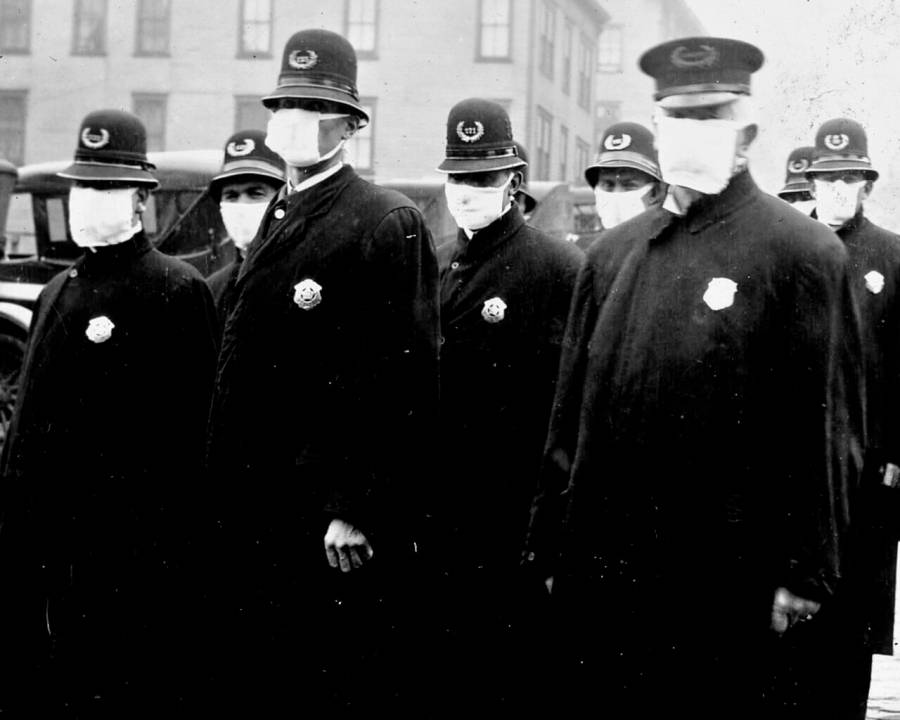
The name Spanish Flu originated because the news of the disease first came from neutral Spain. This was a time when due to World War 1, there was strong censorship & restrictions on the press everywhere else, giving the false impression that the disease was specific to Spain. One of the worst pandemics in history, Spanish Flu was a deadly Influenza Pandemic caused by H1N1 Influenza A virus, which affected a third of the world’s population at the time.
The overcrowding of the soldiers during the war associated with malnourishment & weakened health status, poor hygiene and rapid movement of troops all facilitated in spreading the 1918 Influenza Pandemic to distant lands and making it more dangerous by promoting bacterial superinfection. Spanish Flu tended to kill especially young adults.
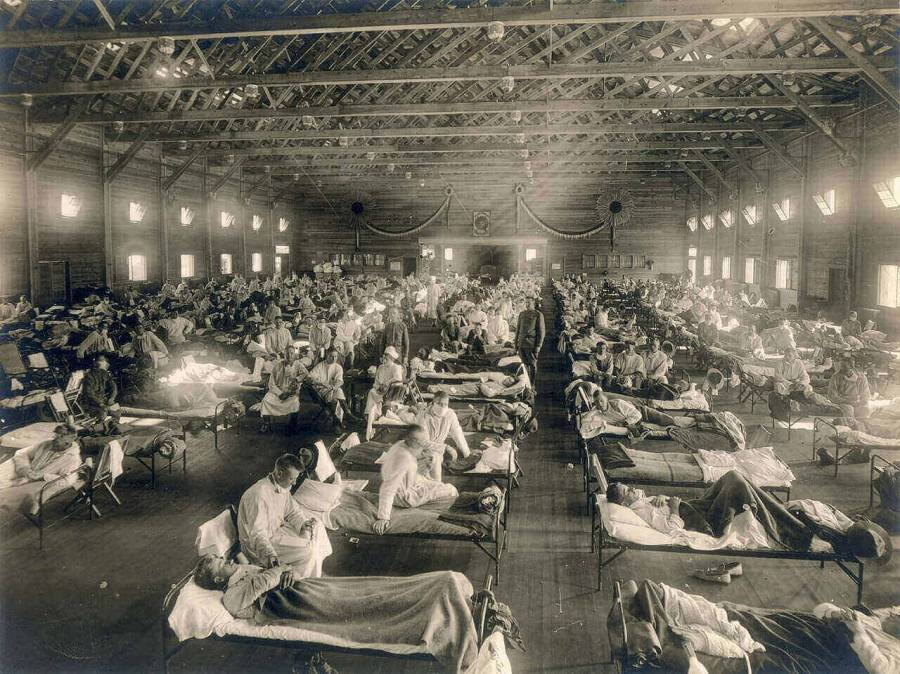
The 1957 -1958 Influenza Pandemic was one of the worst pandemics in history, with more than 1.1 million deaths (according to Centre for Disease Control and Prevention) worldwide due to Influenza. The agent behind 1957 -1958 Influenza Pandemic was Influenza A virus subtype H2N2. The strain was new and the population of the time did not have immunity, resulting in the fast spread of the disease and high mortality worldwide.
The 1957 -1958 Influenza Pandemic is also known as the Asian Flu Pandemic, which originated in Guizhou, China in early 1957. The pandemic would soon spread to Hong Kong, Singapore, Taiwan, and India. Later by June of the same year, United Kingdom & United States were also affected. However, the rapid development of vaccines by October of the same year, along with improved medical care & the creation of antibiotics to treat secondary bacterial infection helped a lot to contain the pandemic and stop further damage.
Hong Kong Flu of 1968, one of the worst pandemics in the history of the world, is also known as the 1968 Flu Pandemic as it lasted from 1968 to 1970. This global outbreak of Influenza, which originated in China in 1968 was caused by the H3N2 strain of the Influenza A virus. Here it would be important to mention that the Hong Kong Flu of 1968, was the 3rd Influenza pandemic of the 20th century. The first two were – the Spanish Flu of 1918 to 1920 followed by 1957 -1958 Influenza pandemic.
The name of the disease comes from the fact that the pandemic started in July 1968 from Hong Kong. The virus was highly contagious and soon spread very fast across the world. Multiple countries of Asia, Europe, Africa, as well as in the American continent, were affected. The highest mortality was seen in infants and the elderly. An estimated 1 million people died during the pandemic, according to the Centre for Disease Control and Prevention.
AIDS is a disease that certainly needs no introduction. It would also not be wrong to say that it is perhaps one of the biggest pandemics in recent history. However, it should be made clear that the nomenclature used by WHO to describe HIV is a “global epidemic”. The disease which is prevalent worldwide has claimed the life of more than 32.7 million people all over the world since it first started.
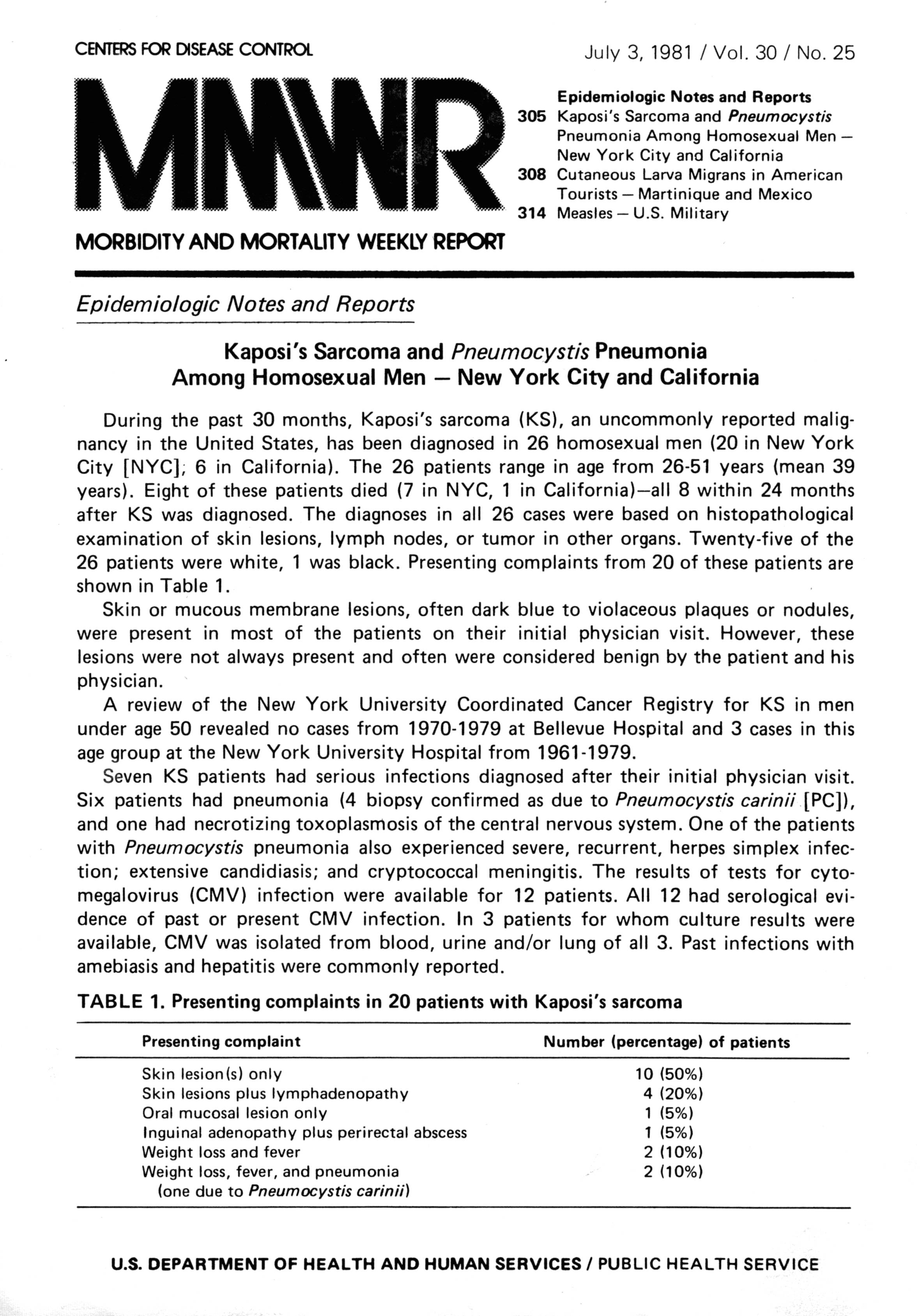
Researchers have proved that HIV - the virus responsible for AIDS, has its origin from the Simian Immunodeficiency Virus (SIM) that attack the immune system of monkeys and apes. At some point in history, this virus got transferred from its original host – the chimpanzees to humans. The humans, in this case, were probably hunters who ate the flesh of the animals, or perhaps the blood of the animal contaminated the wound of people involved in hunting (which occurred in the course of hunting).
The virus adapted to humans and became HIV.
Researchers have also discovered that the transmission of the virus to humans occurred around 1920 in Kinshasa in the Democratic Republic of Congo. The area has a good transport system in the form of roads, railways & rivers. The infection would spread out and by the 1980s HIV appeared in the USA and by 1982 the new disease caused by the virus had been named AIDS.
The virus would be isolated and identified in France in 1983. The rest as they say is history.
The Swine Flu Pandemic is also known as (H1N1) 2009 Pandemic- a term coined by WHO. This pandemic caused by Influenza virus subtype H1N1 is also considered one of the worst pandemics in history, because even with the availability of 21st-century medical facilities, somewhere between 150,000 to 575,000 people died in the pandemic worldwide.
The infection was first identified to have originated in the state of Veracruz in Mexico, with a 5-year-old boy having acquired the infection in March 2009 in a rural town of Veracruz. Although the Mexican government took steps to confine the infection and prevent its further spread, by April of the same year, WHO had declared it a “public health emergency of international concern” and by June it had been declared a global pandemic.
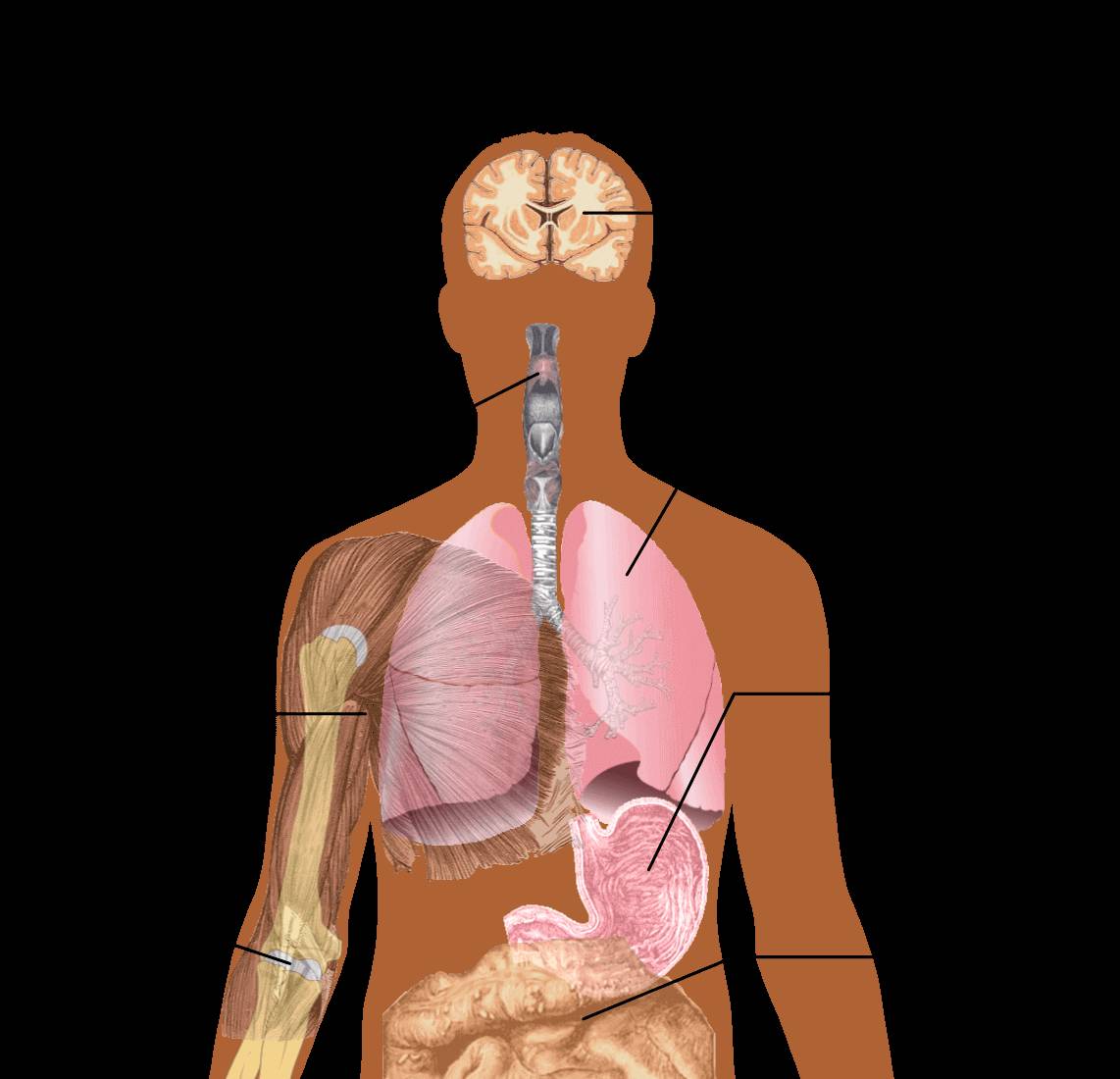
The disease spread by person to person transmission through respiratory droplets and by the end, 1.4 billion people across the globe were affected. Children and young adults were primarily affected by the Swine Flu and the majority of the dead were people younger than 65 years.
After causing terror and havoc worldwide, the end of the H1N1 pandemic was declared by WHO in August 2010.
Although medical science has progressed tremendously since the dawn of civilization, the tendency for the pandemics & epidemics to break out has not disappeared altogether till now. As the medical facilities continue to evolve, nature has also shown a tendency to come up with rather new diseases that make all recent medical developments look useless.
When we evaluate the worst pandemics in history, we observe that a few basic problems associated with the rise of these diseases remain the same. The worst epidemics in history have a common story to tell. Lack of hygiene, contact with wild animals, overcrowding due to lack of space – as happens in overpopulated large cities or warlike conditions have always increased the tendency for new diseases to rise and spread quickly.
The improvement of travel facilities and the development of new means of transportation connecting even the most remote areas to the developed cities have ensured that no place in the world can remain truly isolated or secluded from the constantly emerging new diseases.
The emergence of new diseases and pandemics have also brought out the best aspects and also the worst sides of the human race. All the so-called worst pandemics in history saw the endurance of the human spirit to conquer insurmountable odds. However, at the same time scared and gullible people also subjected other people of different races or religions to discrimination, holding them wrongly responsible for their problems.
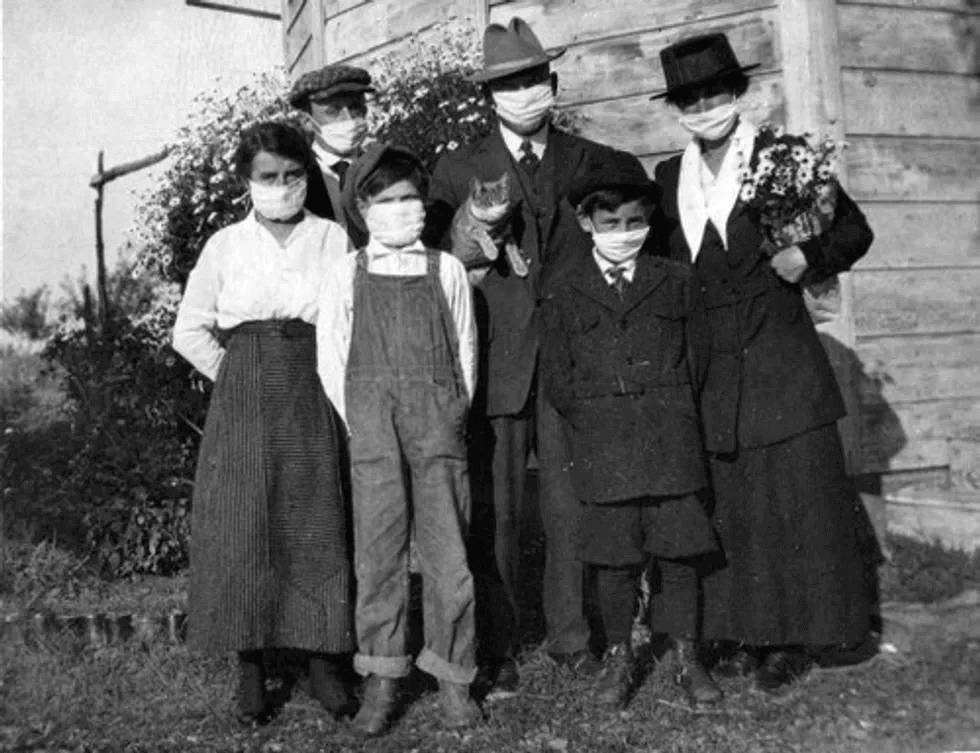
Although the human race has learned from its experience, adapted in the difficult situation & finally evolved in the process but still there are a lot of things we take for granted. In many places across the world people are still not hygiene conscious regarding their environment thus making not just them but others too prone to diseases.
Teaching people to become self-sufficient and not being dependent on others, is also very important to ensure that damage caused is minimum when the societal system breaks down as has happened in all the worst pandemics in history. Finally, being open to learning, following the laws during the pandemics & maintaining discipline at the time of crisis, are small steps that can make a huge difference during a new pandemic, when new diseases with no known history arise out of nowhere.
Most importantly we should remember, as diseases continue to evolve, to beat it, we as a human race can evolve too.